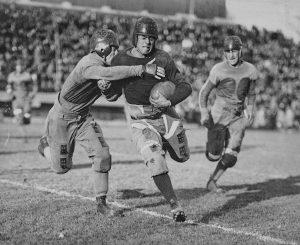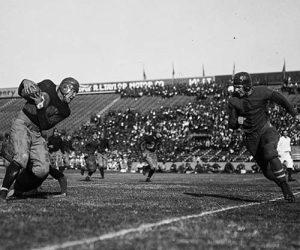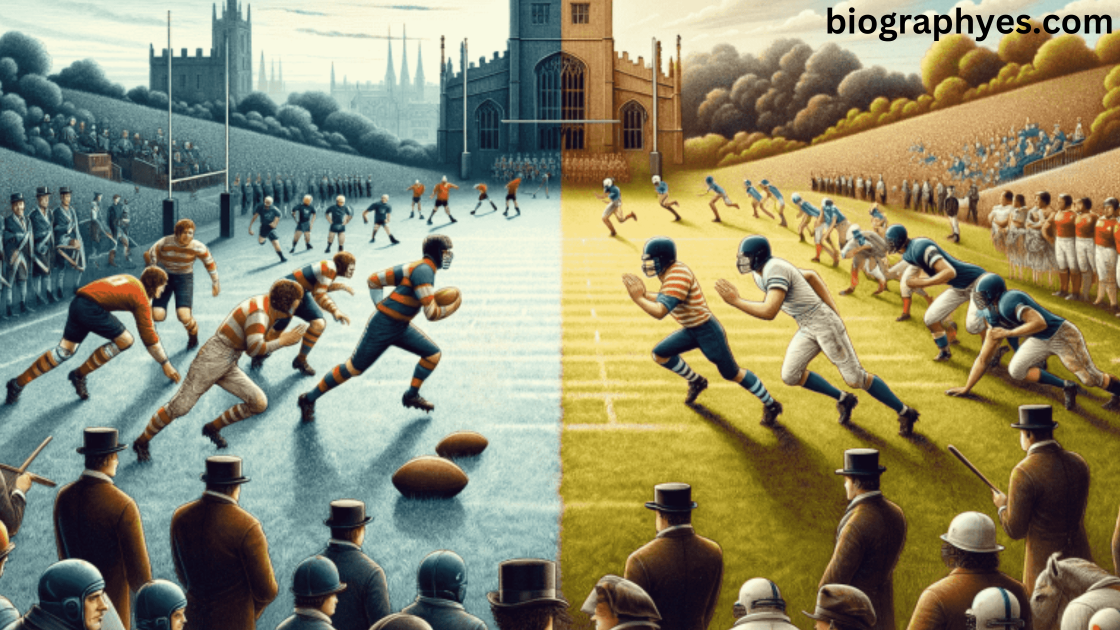

American football, a sport deeply woven into the cultural fabric of the United States, has a rich history that spans over a century. From its early days of rudimentary rules and dangerous play to the highly organized and strategic game we see today, American football has evolved significantly. This article delves into the history of American football, tracing its origins, key developments, and the milestones that have shaped the sport into the national phenomenon it is today.
Early Origins: The Birth of the Game
American football’s roots can be traced back to the mid-19th century, where it emerged from a blend of soccer and rugby played by English immigrants. The first recorded game of American football took place on November 6, 1869, between Rutgers and Princeton. Unlike modern football, this game resembled a mixture of soccer and rugby, with each team consisting of 25 players and the objective being to kick the ball into the opposing team’s goal.
The Establishment of Rules: Walter Camp’s Influence
The game began to take a more defined shape in the 1880s, largely due to the influence of Walter Camp, often referred to as the “Father of American Football.” Camp, a player and coach at Yale University, was instrumental in developing many of the fundamental rules that differentiate American football from its predecessors. He introduced the concept of the line of scrimmage, the snap from center to quarterback, and the system of downs, which provided a structured framework for the game.
The Formation of Professional Leagues
As colleges and universities across the United States adopted the sport, American football grew in popularity. The early 20th century saw the formation of professional teams and leagues. The National Football League (NFL) was established in 1920, initially composed of 11 teams from four states. The NFL struggled in its early years, facing competition from other leagues and challenges in maintaining financial stability. However, the league’s commitment to standardizing rules and promoting fair play helped it gain a foothold.
The Golden Age of College Football
While professional football was finding its way, college football experienced what is often referred to as its “Golden Age” during the 1920s and 1930s. This period saw the rise of legendary coaches like Knute Rockne of Notre Dame and the establishment of iconic stadiums such as the Rose Bowl. College football captivated the nation, drawing large crowds and significant media attention. The annual bowl games became major sporting events, further cementing the sport’s place in American culture.
Innovations and Changes: The Forward Pass and More
One of the most significant innovations in the history of American football was the introduction of the forward pass. Prior to 1906, the game was predominantly a running game, often leading to dangerous and violent collisions. The legalization of the forward pass, championed by President Theodore Roosevelt and other reformers, aimed to reduce the brutality of the sport and make it more exciting. This change revolutionized the game, adding a new dimension of strategy and skill.
Integration and the Rise of the Modern NFL
The mid-20th century marked a period of significant change and growth for American football. The NFL integrated its player base in the late 1940s, welcoming African American players who had been previously excluded. This period also saw the emergence of the rival American Football League (AFL) in 1960, which brought new innovations and competition. The two leagues eventually merged in 1970, leading to the creation of the modern NFL.
The Super Bowl, first played in 1967, quickly became the pinnacle of American football, drawing millions of viewers each year. The game’s popularity soared in the 1970s and 1980s, driven by the dominance of teams like the Pittsburgh Steelers, the Dallas Cowboys, and the San Francisco 49ers. Iconic players such as Joe Montana, Terry Bradshaw, and Walter Payton became household names.
The Modern Era: Advances in Technology and Safety
The modern era of American football has seen significant advances in technology and an increased focus on player safety. Innovations such as instant replay, advanced helmet technology, and data analytics have transformed the way the game is played and viewed. The NFL has also implemented stricter rules and protocols to address the issue of concussions and other injuries, aiming to protect players while maintaining the integrity of the sport.
Cultural Impact and Future Prospects
Today, American football is more than just a sport; it is a cultural phenomenon. The NFL is one of the most lucrative sports leagues in the world, with a massive global following. College football continues to thrive, with fierce rivalries and passionate fan bases. The sport’s impact extends beyond the field, influencing fashion, entertainment, and even politics.
Looking to the future, American football faces challenges such as concerns over player safety, the need for diversity and inclusion, and the evolving landscape of media consumption. However, its deep-rooted place in American society suggests that it will continue to adapt and thrive.


From its humble beginnings on college campuses to its current status as a multi-billion-dollar industry, American football has undergone a remarkable transformation. The sport’s history is a testament to its resilience, innovation, and enduring appeal. As fans across the nation gear up for another season, the story of American football continues to unfold, promising new heroes, unforgettable moments, and the timeless thrill of the game.



Pingback: History and details of the Olympic Games - Biographyes